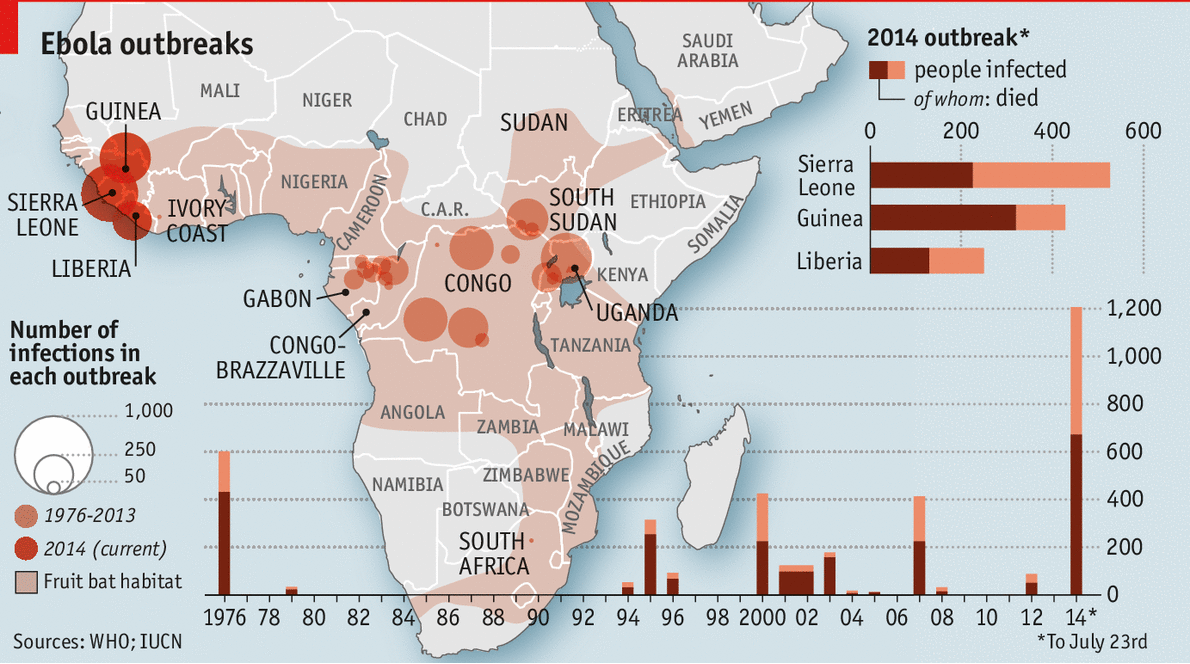Ebola virus .. what it is and how we can prevent it? «1»
Friday, August 8th World Health Organization announced in Geneva that the epidemic of Ebola virus (EVD) has become an emergency situation deserves the attention of the world. This epidemic of Ebola virus is not the first epidemic of the disease of western and central Africa, however, and the most stressful and ferocity. The first appearance of successive epidemics of Ebola virus was in 1976 in the Congo River to the vicinity of the so-called Ebola (hence the disease is taking its name). In the intervening period between 1976 and 2012 (36 years old) recorded several epidemics of Ebola virus in Africa hit the order of 2,500 people. The current epidemic has hit since the start of his appearance in eight months and just shoved than 2,400 people died, including more than half.
Ebola disease caused by a virus, but does not see the precise electron microscope, however, fierce as the percentage of deaths among those infected from 50 to 90 percent. The disease affects mainly wild animals, especially bats, which is transmitted to humans. Transmitted infection from the patient to the right if contaminated with blood or secretions such as saliva, urine, feces and semen wounds or scratches in the skin or mucous membrane with any of Mkhalatih. Despite the ugliness of the virus, but it is God's kindness to slaves that it is not infected by breathing. It takes the appearance of symptoms after contracting the virus from 2 to 21 days, symptoms begin to rise in temperature. Headache, feeling tired, and pain in muscles and joints, and congestion in the Al-Zour, and soon the patient gets diarrhea and vomiting. The disease progresses Faisab patient bleeding internal or external, and landing in the kidneys and liver.
There is no specific treatment for the disease or the vaccine protects against him so far, and so cure for the patient depends on supportive therapy by giving intravenous fluids to combat dehydration, fever reducers, painkillers, with the need to isolate the patient so as not to transmit the infection to others, and here must be alert to that treatment must be in the hospital or health center and not in the house for two reasons: the patient briefing with all the necessary medical potential to save him, and secondly, the prevention of transmission of it to Mkhalatih. And the medical team to take maximum protection methods such as wearing protective clothing and a mask and medical gloves and not to be subjected to discharge the patient. In short remedy is in rapid patient care, and to avoid the transmission of it to others. In our conversation next week, we raise the question .. Are we in the UK are exposed to the Ebola epidemic?

0 comments:
Post a Comment